Research group of Dr. Manuel Aguilar
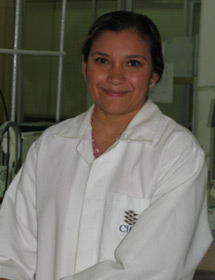
Efecto de la copolimerización y su estructura sobre las propiedades de polímeros rígidos.
Resumen
En el caso de María Isabel Loría, aparte de ser el apoyo principal en los proyectos del grupo de membranas, ya que es la encargada del laboratorio y manejo de reactivos, materiales y equipo dentro del mismo, trabaja intensamente en un tópico muy interesante de investigación sobre las propiedades de copolímeros aromáticos rígidos. Una de las opciones disponibles cuando se requiere usar polímeros con propiedades que se ajusten a aplicaciones específicas, es la preparación de copolímeros que contengan en su estructura 2 o mas monómeros diferentes. En el caso particular de los polímeros de ingeniería como poliamidas y poliésteres con alta resistencia a la temperatura, en los laboratorios del CICY se han estudiado dos tipos de síntesis por condensación de copolímeros rígidos con dos diferentes monómeros y dos tipos de estructura, al azar y en bloques. Los resultados indican que en el caso de copolímeros rígidos, con una distribución de sus comonómeros al azar, las propiedades térmicas, mecánicas y de transporte de gases de ellos se pueden predecir mediante reglas sencillas de mezclas. Por otro lado, en el caso de los copolímeros en bloque, en donde también es juega un papel importante el tamaño de los bloques que los conforman, la predicción de sus propiedades no se ajusta a reglas de mezclas tan simples, ya que por un lado cada uno de los bloques exhibe sus propiedades térmicas y mecánicas características, que dependen de la longitud del bloque y el monómero base del que está formado. Mientras que las propiedades de transporte de gases dependen de la forma en que se empacan los bloques que constituyen el copolímero.
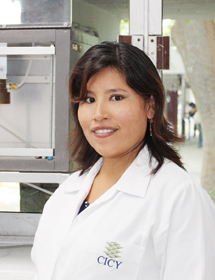
Catalytically active membranes for biodiesel production
Abstract
Currently, the membrane reactors with polymer catalytically active membranes can be a potential competitive process to produce biodiesel since it combines reaction and separation in a single step because the catalyst is immobilized in the polymer matrix. Catalysts that have been embedded in a polymeric matrix are poly (styrene sulfonic acid), sulfated zirconia (Zr(SO4)2), sulfossucinic acid (SSA), usually, in a hydrophilic polymer matrix such as polyacrilonitrile (PAN) and polyvinyl alcohol (PVA). The advantages of these membranes, as shown in Figure 1, are a combination of the selectivity of the polymer matrix to hydrophilic solvents such as methanol, water and glycerol allowing separation of these reactants from the reaction medium, coupled with the ability to incorporated catalysts to catalyse both esterification and transesterification reactions that occur primarily in the biodiesel production process.
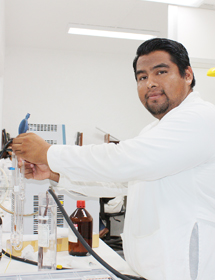
Carbon molecular sieve membranes derived from rigid aromatic polymer blends for gas separation
Abstract
Membrane technology has shown a remarkable development during the last three decades for gas separation processes. Within this technology, polymeric membranes are preferred because their easy processability, outstanding thermal and mechanical properties and good gas permeation-selectivity relationship. Nevertheless, gas transport properties of polymeric membranes are limited for a trade-off relationship between permeability and selectivity, besides the difficulty to separate gases with similar kinetic diameters. Carbon molecular sieve membranes, which are obtained from pyrolysis of polymeric precursors, are an alternative to the limitation of polymeric membranes. Carbon molecular sieve membranes have excellent permeation-selectivity relationship..
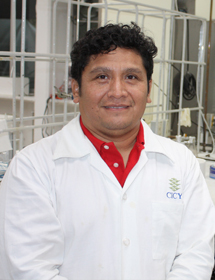
Thin film Composite membranes for reverse osmosis with new sulfonated polysulfone support
Abstract
In this work the support and the contact surface of reverse osmosis membranes from modified polyphenylsulfone are improved by obtaining crosslinked polymers presenting fixed cationic groups covalently anchored to the polymer chain. The resultant membranes performance should avoid incrustations by fouling, increase resistance to aggressive environments, durability, self-cleaning and the capacity of salts elimination, which will allow extending the life of the membrane. First we will characterize the structure of the virgin polymer and modified membrane, by analyzing FTIR sulfonation degree by volumetric titration analysis and/or 1H NMR. The morphology and structure will be analyzed by SEM.
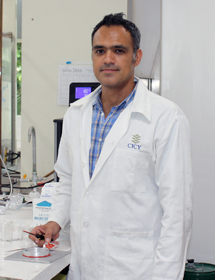
Membranes for Hydrogen Purification obtained by electrolysis type PEM cells
Abstract
This work is aimed to understand the effect of structural changes on polymer properties. From the homopolymers BFA TERE and BFA ISO several copolymers are synthesized for membrane formation by varying the concentrations of each monomer 50/50 , 60/40 , 40/60 and 80/20 mol %. The physicochemical properties of the synthesized polymers will be characterized by X ray diffraction (XRD), thermogravimetric analysis (TGA), solubility measurement, density and pure gases transport properties for (He, H2, O2, N2, CH4 and CO2). The results will show the role of each monomer on the separation of a mixture H2 O2 as the one obtained from water electrolysis processes.
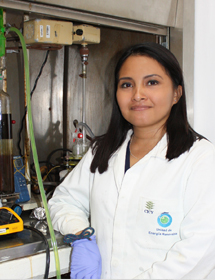
POLYIMIDES SYNTHESIS WITH HIGH AROMATICITY RESISTANT TO PLASTICIZATION CO2 SEPARATION
Abstract
My work is related to natural gas consumption which is growing fast due to increased industrial demand. Natural gas wells contain mostly methane but can contain up to 30% impurities such as CO2, which can corrode pipelines as well as lower the overall energy value of the natural gas. One of the most widely used technologies for the purification of the natural gas is through membranes; however they present a problem known as plasticization. CO2-induced plasticization decreases the membrane performance in high-pressure CO2/CH4 separations. The polymer matrix swells upon CO2 sorption, which accelerates the permeation of CH4. The polymer membrane loses its selectivity.
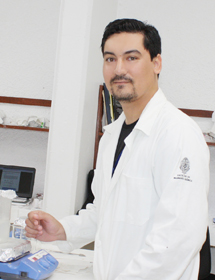
Delonix regia galactomannan enzymatic hydrolysis: Evaluation of their rheological properties effect on dispersions and gels
Abstract
Flamboyan tree (Delonix regia) seed contains in its endosperm a natural polymer a galactomannan that has a mannose galactose ratio of 4:1. Galactomannans are used in a wide variety of industries due to its properties as thickeners, film forming and gels. The Delonix regia galactomannan (DrGM) has these properties, but it is hard to solubilize due to the interaction by Hydrogen bonds between mannose backbone without galactose residues. The aim of this work is the study the hydrolysis effect on rheological properties of DrGM and its solubility in aqueous medium.




